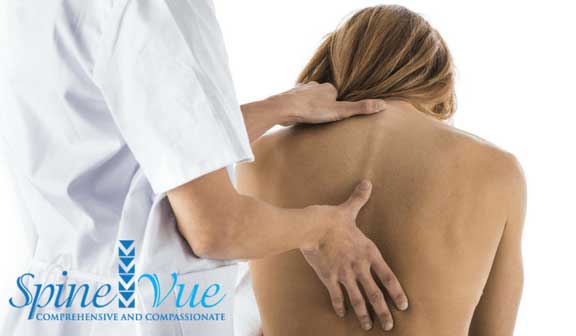How to Know If You Have Kyphosis

Signs and Symptoms of Kyphosis
Kyphosis refers to a pronounced rounding of the upper back, most often observed in mature women. Signs and symptoms of kyphosis include a rounding of the back which can happen to anyone at any point in life but is most often related to aging. There is a connection between Osteoporosis, which weakens the spine, and the risk of Kyphosis. However, malformations or birth defects can also cause this condition.
Kyphosis is the result of spinal bones that are so weak that they eventually fracture, then compress, causing the spine to curve forward, creating a hump-like appearance. A normal spine will consist of vertebrae shaped like cylinders stacked upon each other. When Kyphosis is present, the vertebrae over time will become more wedge-shaped, so the stack begins to curve. When mild, it is not typically painful or problematic. If it is serious, though, it can be disfiguring and create extreme discomfort.
Some Reasons For This Deformity Are:
- Compression fractures, caused by weakened bones due to Osteoporosis.
- Degenerative Disc Disease: The cushions between the vertebrae lose volume so that the vertebrae are stacked closer and complicate the condition.
- Scheuermann’s Disease: A sudden growth in stature during puberty, most often seen in boys
- Birth Defects: If the spine doesn’t form properly before birth, Kyphosis can develop
- Other illness or syndromes: Certain childhood illnesses can be related to Kyphosis
- Cancer and treatments of the disease: Tumors of the spine, chemo, and radiation can weaken the bones of the spine, causing the spine to crack due to compression
- Poor posture: In teens, habitual slouching can lead to Kyphosis
Effects of Kyphosis
Aside from the obvious conditions of the rounded spine and associated pain, having a rounded back or having to wear a back brace can cause emotional distress and poor body image. If the back is stooped forward enough to force the abdomen to compress, it can also impact one’s appetite. Loss of height and mobility are also complications of this condition.
Spinevue treats Kyphosis by performing a procedure called Kyphoplasty. This is a minimally invasive procedure that restores the integrity of the vertebrae and straightens the spine. During this procedure, a void is created in the affected vertebrae by inserting a form of a balloon. The balloon is inflated, then acrylic bone cement is injected into the vertebrae. The results are almost immediate as the cement hardens in 15 minutes, restoring the spine to its height and shape. Any pain from the prior condition and the minimally invasive surgery should dissipate in a couple of weeks, and physical therapy is usually not a requirement. However, Spinevue will continue to monitor the progress of the patient, and treat the underlying condition that originally led to the development of Kyphosis.
If you have pain in your upper back, notice a curve in your spine, or want to learn more about the signs and symptoms of kyphosis, contact Spinevue today to schedule your Free Consultation.
